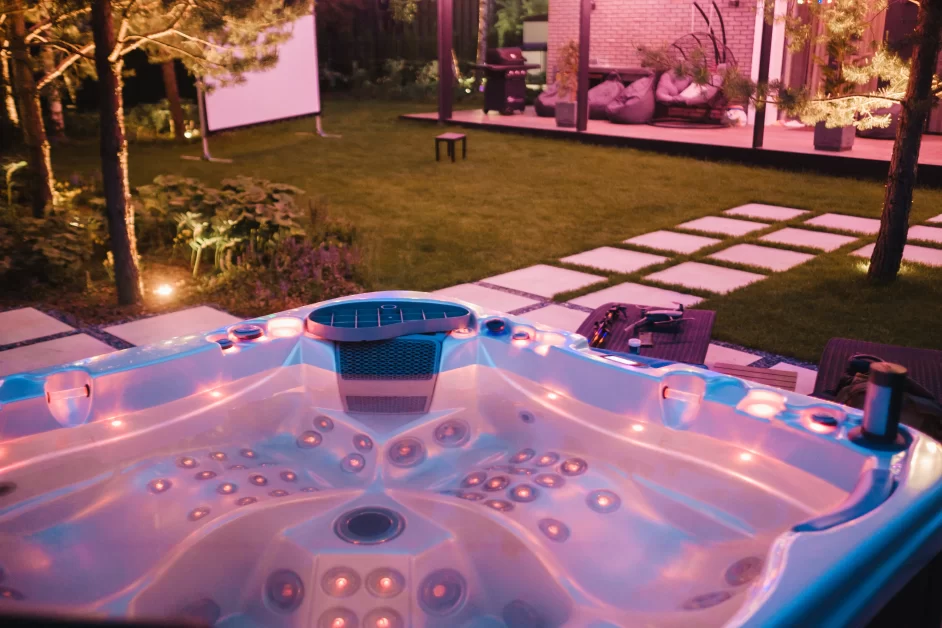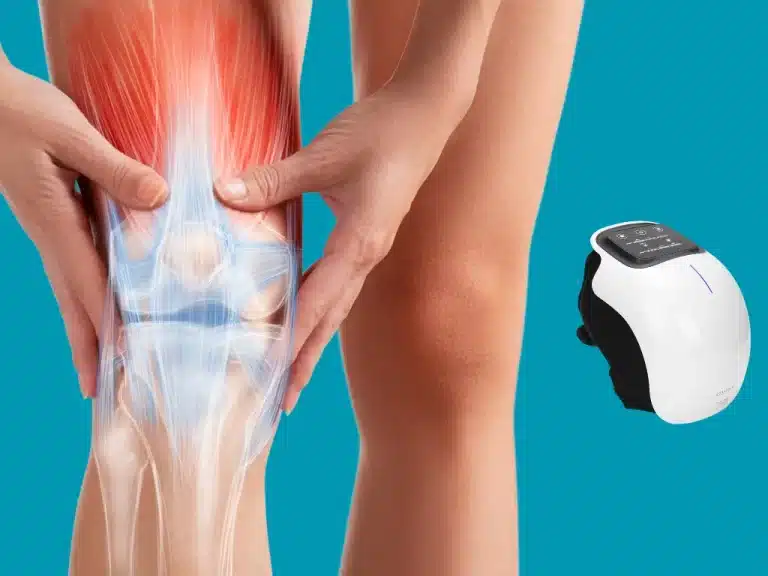How Many Gallons Is a Hot Tub
Find out how many gallons your hot tub holds and why it matters for maintenance, energy efficiency, and the perfect soak. Learn about average capacities, key factors that affect water volume, and practical tips for managing your hot tub effectively.
A hot tub’s gallon count isn’t just trivia—it’s the key to cheaper bills, safer soaks, and water that stays inviting. Whether yours is a compact oasis or a sprawling soak zone, owning the numbers means owning the experience.
Ready to ditch the guesswork? Grab a tape measure, peek at your manual, or try our calculator below. Your tub (and your inner Zen master) will thank you. 🌊✨
Think of it like baking a cake. Too much flour (or chlorine), and it’s a mess. Too little, and it flops. Nailing the “recipe” means understanding your tub’s water volume.
Why Gallon Counts Matter
- 🧪 Chemical Balance: A 400-gallon tub needs half a cup of chlorine weekly—but guess wrong, and you’ll either fry your skin or host a bacteria party.
- 💸 Energy Bills: Heating 500 gallons costs about 15–15–20 monthly. Overfill by just 50 gallons? That’s like leaving a faucet running all month.
- 🛁 Comfort: Ever tried lounging in a tub that’s too shallow? It’s like sitting in a kiddie pool.
Quick Stats: What’s Average?
| Tub Size | Gallons Range | Perfect For |
|---|---|---|
| Cozy (2–4 people) | 200–300 | Couples, small spaces |
| Family (5–6 people) | 300–450 | Weekend gatherings |
| Party (7+ people) | 450–600+ | Backyard bashes |
What Changes the Math?
Your tub isn’t just a giant bucket. Its shape, depth, and even the seats play tricks on volume:
- A round tub saves space but holds 20% less than a square one.
- Lounge seats steal precious gallons—great for reclining, bad for water efficiency.
- Depth matters: Add 6 inches, and you’ll pour in an extra 50–75 gallons.
How to Find Your Tub’s Magic Number
- Use a flow meter: Hook it to your hose while filling—it’s like a gas pump for water.
- Check the manual (if it’s not buried in a drawer).
- Measure it yourself: Length × Width × Depth × 7.48 = Gallons.
- Example: A 7’x7’x3’ tub? That’s 7 × 7 × 3 × 7.48 ≈ 1,100 gallons.
Hot Tub Water Capacity Calculator
Check out Hot Tub Sizes & Dimensions
Average Water Capacities by Hot Tub Size
When it comes to hot tubs, one size does not fit all. The water capacity of a hot tub can vary significantly based on its size and design. Understanding these capacities is essential for proper maintenance and use. Here’s a breakdown of the average water capacities for the most common hot tub sizes:
Small Hot Tubs (2-4 Person)
Small hot tubs are perfect for couples or small families. They are compact, fitting easily into limited spaces while offering a comfortable soaking experience. On average, these hot tubs hold between 200 and 300 gallons of water.
- 2-Person Hot Tub: Approximately 150-220 gallons
- 3-Person Hot Tub: Approximately 200-275 gallons
- 4-Person Hot Tub: Approximately 250-300 gallons

Medium Hot Tubs (5-6 Person)
Medium-sized hot tubs are ideal for families or small gatherings. They provide more space and additional features, such as more jets and seating options. These hot tubs typically hold between 300 to 450 gallons of water.
- 5-Person Hot Tub: Approximately 300-375 gallons
- 6-Person Hot Tub: Approximately 350-450 gallons
Large Hot Tubs (7+ Person)
Large hot tubs are ideal for larger families or those who frequently entertain guests. They offer the most space and amenities, making them a luxurious choice. These hot tubs hold between 450 and 600+ gallons of water on average.
- 7-Person Hot Tub: Approximately 400-500 gallons
- 8-Person Hot Tub: Approximately 500-600 gallons
- 9+ Person Hot Tub: 600 gallons and above
Check out Easily Convert Gallons to Liters with Our Simple Converter Tool.
Factors Affecting Hot Tub Water Capacity
Three factors are used to determine the water capacity of a hot tub. The total volume of water your hot tub can hold can be significantly influenced by these factors. Accurate calculations and better maintenance decisions can be achieved by understanding these elements.
Check out How to Quickly Calculate the Gallon Volume of Your Hot Tub.
1. Shape of the Hot Tub
The shape of your hot tub is one of the primary factors affecting its water capacity. Hot tubs come in 3 shapes, including round, square, rectangular, and even custom designs. Each shape has a different surface area and volume, influencing how much water it can hold.
- Round Hot Tubs: These typically have a smaller footprint and lower water capacity than square or rectangular models.
- Square and Rectangular Hot Tubs are more common and usually hold more water due to their larger surface area and often more profound designs.
- Custom Shapes: These can vary widely in capacity depending on the specific design and dimensions.
2. Seating Arrangement
The number and arrangement of seats in the hot tub also has an impact on the water capacity. More seats tend to result in less space for water, as they take up a significant volume.
- Bench Seats are more space-efficient and can lead to a higher water capacity.
- Lounge Seats: These take up more space and reduce the overall water capacity, but they provide a more relaxing experience.
3. Depth of the Hot Tub
Deeper hot tubs hold more water but require more chemicals and energy, which is another crucial factor.
- Shallow hot tubs are simpler to enter and exit, require less water, and are more economical regarding water usage and heating.
- Deep Hot Tubs: These provide a more immersive experience but at the cost of higher water and energy usage.
Additional Features
Special features and accessories within the hot tub can also influence the water capacity.
- Jets and Waterfalls: These features take up space and slightly reduce the water capacity.
- Built-in Coolers or Bars: These can significantly reduce the water capacity due to the space they occupy.
- Steps and Ridges: Internal steps and seating ridges designed for comfort can also reduce the total water volume.
Insulation and Shell Thickness
The thickness of the hot tub’s shell and the amount of insulation can affect the internal dimensions, thus influencing the capacity.
- Thicker Shells: Provide better durability and insulation but slightly reduce the internal volume available for water.
- Insulation: Necessary for energy efficiency, it can slightly impact the water capacity by reducing internal space.
Methods to Determine Your Hot Tub’s Capacity
Accurately determining your hot tub’s water capacity is essential for proper maintenance and care. Here are some methods for measuring and calculating its capacity.
Method 1: Manufacturer Specifications
The simplest way to determine your hot tub’s capacity is to refer to the manufacturer’s specifications. Most hot tub manuals or product details include the water capacity. Having access to this information will save you time and ensure accuracy.
Method 2: Measuring and Calculating Manually
If the manufacturer’s specifications are unavailable, you can manually measure and calculate the water capacity using the dimensions of your hot tub. Here’s a step-by-step guide:
- Measure the Length, Width, and Depth:
- Use a tape measure to find the internal dimensions of your hot tub.
- Measure the length (in feet) from one end to the other.
- Measure the width (in feet) from one side to the other.
- Measure the average depth (feet) from the bottom to the water-fill line. If the depth varies, take several measurements and calculate the average.
- Calculate the Volume in Cubic Feet:
- Use the formula for calculating the volume of a rectangular prism: Volume=Length×Width×Depth\text{Volume} = \text{Length} \times \text{Width} \times \text{Depth}Volume=Length×Width×Depth
- Convert Cubic Feet to Gallons:
- Since one cubic foot is equal to 7.48 gallons, multiply the volume by 7.48 to convert it to gallons: Capacity in Gallons=Volume in Cubic Feet×7.48\text{Capacity in Gallons} = \text{Volume in Cubic Feet} \times 7.48Capacity in Gallons=Volume in Cubic Feet×7.48
Example Calculation:
- Length: 6 feet
- Width: 4 feet
- Average Depth: 3 feet
- Volume in Cubic Feet: 6×4×3=726 \times 4 \times 3 = 726×4×3=72 cubic feet
- Capacity in Gallons: 72×7.48≈53972 \times 7.48 \approx 53972×7.48≈539 gallons
Check out Hot Tub Calculation Tools.
Method 3: Using a Water Flow Meter
If you have a water flow meter, you can measure the water used to fill your hot tub. This method is highly accurate and straightforward:
- Install a Water Flow Meter:
- Attach a water flow meter to your garden hose.
- Fill the Hot Tub:
- Turn on the hose and fill your hot tub, keeping an eye on the meter.
- Note the reading on the meter once the hot tub is filled to the desired level.
- Record the Measurement:
- The reading on the water flow meter will indicate the exact number of gallons used.
Method 4: Online Calculators
These tools usually ask for the dimensions of your hot tub to be inputted and then give an estimate based on those measurements.
Steps:
- Search for a hot tub water capacity calculator online.
- Enter the length, width, and average depth of your hot tub.
- Review the calculated capacity.
Practical Applications of Knowing Your Hot Tub’s Capacity
By using this information, you can maintain the hot tub effectively and ensure it operates efficiently and safely. These are the key applications for understanding your hot tub’s water capacity:
Proper Chemical Treatment
Maintaining the correct chemical balance in your hot tub ensures clean and safe water. Knowing the exact water capacity allows you to add chemicals, such as chlorine, bromine, and pH balancers.
- Accurate Dosage: Use the water capacity to calculate the precise amount of chemicals needed. Over-treating or under-treating the water can lead to skin irritation, equipment damage, or ineffective sanitation.
- Chemical Calculator: Many chemical products provide dosage instructions based on the number of gallons. Follow these guidelines to maintain a healthy and balanced hot tub environment.
Maintenance Tips: Draining and Refilling
Regular maintenance of your hot tub involves draining and refilling the water to prevent the buildup of impurities and maintain water quality.
- Frequency: Depending on usage and water quality, hot tubs should be drained and refilled every 3-4 months.
- Steps to Drain and Refill:
- Turn off the power: Ensure the hot tub is powered off to avoid damage to the pump and heater.
- Drain the water: The drain valve or a submersible pump will empty the hot tub.
- Clean the surface: Clean the interior surfaces once drained to remove any residue or buildup.
- Refill with fresh water: Use your knowledge of the hot tub’s capacity to fill it to the correct level.
- Balance the chemicals: After refilling, test and adjust the chemical levels to ensure the water is safe and clean.
Energy Efficiency
Maintaining the correct water level in your hot tub ensures proper operation and helps conserve energy.
- Optimal Water Level: Keeping the water level within the manufacturer’s recommended range ensures that the heater and pump operate efficiently, reducing energy consumption.
- Heating Efficiency: Knowing the water capacity helps you understand how much energy is needed to heat the water, allowing you to optimize heating cycles and save on energy costs.
Safety Precautions
Ensuring the correct water capacity is also important for safety reasons. Overfilling or underfilling your hot tub can lead to operational issues and safety hazards.
- Prevent Overflows: Accurately measuring the water capacity prevents overflows, which can cause water damage to surrounding areas and equipment.
- Ensure Proper Operation: Adequate water levels ensure that all components, such as jets and filters, function correctly, providing a safe and enjoyable experience.
Environmental Considerations
Being mindful of the water usage of your hot tub is also important from an environmental perspective.
- Water Conservation: Knowing your hot tub’s capacity can help you be more conscious of water usage and take steps to conserve it, such as using a cover to reduce evaporation.
- Eco-Friendly Practices: To minimize your hot tub’s environmental impact, consider using environmentally friendly chemicals and maintenance practices.
We hope this guide from Hot Tub Patio has provided you with valuable insights into understanding and managing your hot tub’s water capacity. If you have any questions or tips of your own, please share them in the comments below. Don’t forget to subscribe to our blog for more helpful hot tub maintenance and care articles.













